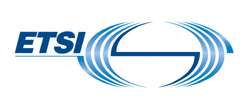
Abstract
ATIS Standard ATIS-0200003 [https://global.ihs.com/doc_detail.cfm?&csf=ASA&input_doc_number=%20&inpu... provided initial use cases and requirements for Content Distribution Network (CDN) Interconnection between two CDN providers via Cache-based Unicast delivery method – software download was the selected content type to drive these initial use cases and requirements. ATIS Standard ATIS-0200004 [https://global.ihs.com/doc_detail.cfm?&csf=ASA&input_doc_number=%20&inpu... developed use cases and requirements for content distribution via Multicast-based delivery.
In a multi-party Federated environment (multiple Service Providers (SP) acting as CDN Providers), CDN interconnections require additional functionality from service providers beyond the straightforward interconnection of IP transport networks. The interconnection and federation of CDN Providers is expected to evolve through a series of content distribution services. These services can be provided by a variety of different mechanisms including:
- Cache-based http unicast.
- Multicast.
- Publish subscribe mechanisms (e.g., RSS or named-data information-centric content routing).
- Content aggregation (e.g., from machine-machine interconnection).
The selection of the delivery method depends on the nature and type of content that is being requested for delivery1
Thus, the purpose of this ATIS Standard is to extend the use cases and requirements developed in ATIS- 020000] and ATIS-0200004 for an environment involving multiple CDN providers joining together to form a CDN Federation with multiple available methods of content delivery. The interconnection life cycle use cases and requirements are re-examined for the impact arising from a Federation of multiple CDN providers. Additional emphasis is placed on the interconnection domain functionality such that guidance on the eventual development of Network-Network Interconnect (NNI) architectures and supporting protocol requirements can be derived.
Accordingly, the scope of this document includes the following:
- Multiple SPs forming a CDN Federation for the purpose of distributing content from Content Providers (CP) to End Users (EU) that individually request the content delivery. The multi-party Federation is strictly limited to a fully meshed structure where each SP/CDN Provider directly engages with other SPs/CDN Providers for the purpose of content distribution. Other structures are excluded from consideration in this document. Examples of alternate and/or add-on structures include the presence of a third party broker/exchange as well as the role of SPs who are not Federation members but who have independent agreements for assisting in content delivery with individual Federation members (see section 5). These alternate/add-on structures are for further study.
- Life cycle interactions are re-examined from the perspective of a Multi-Party Federation environment (see section 6)
- The delivery methods are restricted to cache/unicast (section 7) and multicast methods (section 8). All content types that can be delivered by these methods are in scope.
- Logical functionality associated with interconnection domains between pairs of CDN Providers are examined in detail (section 9). Appropriate requirements are derived in support of these functions.
Finally it should be noted that the protocol development work supporting all CDN-I functionality is being developed in the IETF. Appendix A provides a brief summary of this work.
1An infinite length stream, for example, might be best suited to multicast delivery. Files of various sizes may be suitable for cache-based delivery. Finally, small content units may be appropriate for aggregation and delivery service.
General Information
Publication date: 31 December 2012
ICT rolling plan topic: Cloud computing
SDO: ATIS
Latest publishied version: https://global.ihs.com/doc_detail.cfm?&csf=ASA&input_doc_number=%20&input_doc_title=%20&item_s_key=00603004
